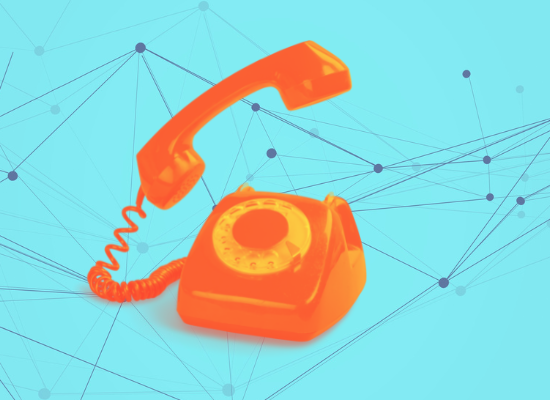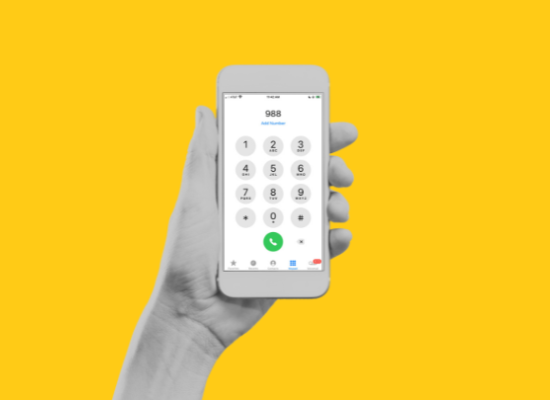
Stephanie Hepburn is a writer in New Orleans. She is the editor in chief of #CrisisTalk. You can reach her at .
Dr. Tia Dole is the Chief 988 Lifeline Officer at Vibrant Emotional Health, the nonprofit that runs the SAMHSA-funded 988 Suicide and Crisis Lifeline (formerly the National Suicide Prevention Lifeline). She joined in January amid critical 988 subnetwork roll-outs for at-risk groups such as LGBTQ+ youth and Spanish speakers. Someone calling anywhere in the United States can press two for Spanish or three for specialized support for LGBTQ+ youth to reach a subnetwork. People can also press 1 for the Veterans Crisis Line — the national crisis call system operated by the Department of Veterans Affairs.
The pilot for LGBTQ+ youth under 25 launched in September 2022. By spring, the service became available 24/7 by call, text and chat, thanks to an initial 7.2 million in federal funding from the U.S. Substance Abuse and Mental Health Services Administration. “Since its inception, there have been about 211,000 total contacts,” says Dr. Dole.
A subnetwork requires the participation of multiple Lifeline-accredited contact centers. The LGBTQ+ youth subnetwork includes seven centers, with the Trevor Project as the primary provider. The Spanish text and chat subnetwork launching in July 2023 will also include multiple centers. Having a cohort of participating centers is vital to ensuring that people reach the subnetwork. “What if there’s a power outage in one of the centers?” she asks. “Redundancy is essential in crisis services.”
The subnetwork has successfully helped address the unanticipated need for LGBTQ+ youth who want to connect to specially trained counselors. “Of course, we hope everyone in the network, regardless of pressing three, will use people’s correct pronouns,” notes Dr. Dole, “but it does matter to LGBTQI+ youth that they can be seen and heard by counselors trained in their needs.”
In the fall, the Lifeline network will launch video communication for people who are deaf and hard of hearing. “It’s important to offer the service so people can sign with the counselor,” notes Dr. Dole.
Staffing a growing subnetwork can be challenging, especially when scaling it. “There was no way we could have known the potential incoming volume,” she says. That’s why pilots often start with limited hours. The LGBTQ+ youth pilot began with 24/7 by phone call and from 3 p.m. to 2 a.m. by text and chat until capacity increased to 24/7.
She says one of the biggest lessons learned is that when you do a pilot, it needs to be available 24/7 if possible. “Realistically speaking, people in crisis aren’t consulting what hours the service might be available to them,” she points out. “Otherwise, you should wait to build that capacity.”
Dr. Dole says Vibrant must deepen its resource base to understand better what people contacting the line need — like the estimated volume of those who need Spanish chat and text — and what centers can offer. However, standardization and efficient data collection and analytics are maximized using a unified platform. Coastal Cloud, a Salesforce consultant, has helped Vibrant develop and implement a fully unified customer relationship management platform for the 988 Lifeline contact centers. It launched in September. “Until now, there has been no platform for behavioral health crisis calls, which require complex functions, including follow-up, potentially reaching out to emergency services and connecting with mobile crisis,” she says. Now the unified platform also has a Spanish version.
The platform has an open application programming interface, meaning that Vibrant and contact centers can build on top, making it work best for them. “It’s like an engineering Lego base — we can build on it with new releases and iterations,” says Dr. Dole. “Every time we do a release, it includes more features oriented around the needs of crisis centers.” The platform is available and free to any 988 accredited contact centers.
Using the platform isn’t mandatory. Dr. Dole says there are contact centers that have invested millions of dollars into their platforms. Contact centers can still connect to the Lifeline network with their own platform. “As the administrator of 988, Vibrant makes policies the contact centers must align with — like on crisis calls,” she says, “but we aren’t in charge of them.”
That said, providing the free uniform platform sweetens the pot. “Hey, it’s free and has cool features and they don’t have to pay for any staff member licenses,” she says. She hopes that with each iteration, more networks sign on to the unified platform because it makes data tracking far easier. “We get the calls through our back-end and they’re routed to the call center — we can see when they pick up and other information, like duration.”
We would like to have that data sitting with us to share it with others. It increases our ability to ensure we’re providing high-quality crisis conversations.”
Having a unified platform Vibrant can share has also been helpful for contact centers with fewer resources. “Many don’t have the money for a fancy CRM platform, and we can give them ours,” she says. However, it still requires training and staffing to bring it into full operation — the latter continues to be a challenge for contact centers nationwide.
The unified platform also provides data feedback loops that help Vibrant determine when and how to expand 988 marketing. Since before the launch of 988, the readiness of the contact centers and crisis systems at large has been a major consideration. The overall answer rate has increased from 83 percent in July 2022, when 988 went live, to 92 percent in April 2023.
The Lifeline is also testing using geographic position information. “As the person’s phone pings the nearest tower, they’re routed to their local call center,” she says. “We are currently testing geo-routing but not with live callers.”
The 988 Suicide and Crisis Lifeline has long relied on calls automatically routing to the nearest accredited contact center by area code. However, people might have a mobile phone from one area and live in another. This is especially true for students and young people.
The Federal Communications Commission held a 988 Geolocation Forum in May 2022, though there have been no public updates since. However, Dr. Dole points out that geo-routing is different from geolocation. “We won’t be able to track people like 911 does,” she says. “The sole purpose of geo-routing is to connect people to their local call center.”
Vibrant is about to embark on a 988 media campaign. “Most adults don’t know about 988,” she says, “which breaks my heart because they don’t know we’re here for them.” Vibrant is also doing a media push for the LGBTQ+ youth and Spanish subnetwork. “My hope, as we launch the media campaign, is that we’ll also be able to make more people aware of the subnetworks.”
Her intention is that people who need to connect to 988 can and that they see themselves in the marketing of the hotline, whether they’re Asian American, American Indian or Alaska Native, Black, Hispanic, LGBTQ+ or a 60-year-old white man in rural America sitting on his porch thinking about ending his life. She highlights that tailored marketing resonates with people, especially when there’s intersectional concordance. “Stories from people who are like you matter, and we need to reach everyone,” she says.
A correction was made on July 14, 2023: An earlier version of this article stated that the Lifeline was readying to launch geo-routing. After publication, Vibrant clarified that the Lifeline is testing geo-routing and will keep #CrisisTalk and the public updated when next steps are identified.









